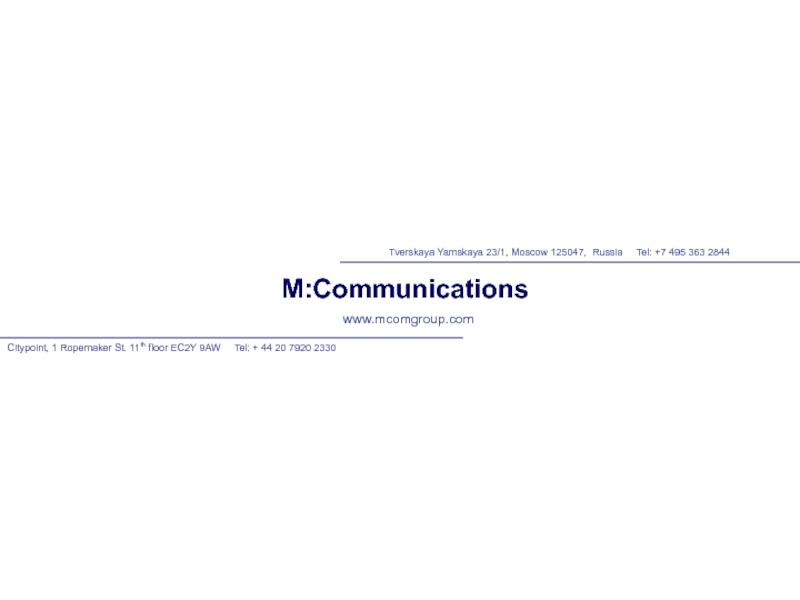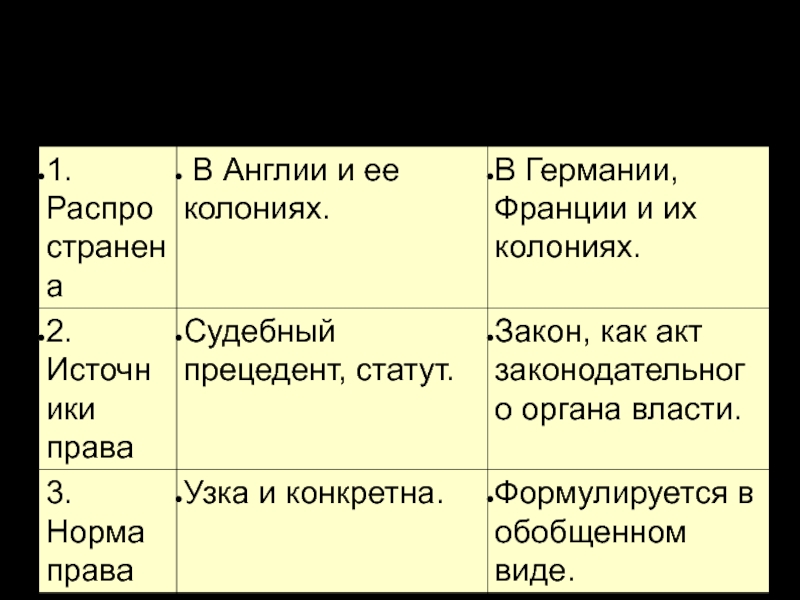Разделы презентаций
- Разное
- Английский язык
- Астрономия
- Алгебра
- Биология
- География
- Геометрия
- Детские презентации
- Информатика
- История
- Литература
- Математика
- Медицина
- Менеджмент
- Музыка
- МХК
- Немецкий язык
- ОБЖ
- Обществознание
- Окружающий мир
- Педагогика
- Русский язык
- Технология
- Физика
- Философия
- Химия
- Шаблоны, картинки для презентаций
- Экология
- Экономика
- Юриспруденция
PR Efficiency in Times of Trouble
Содержание
- 1. PR Efficiency in Times of Trouble
- 2. Crises might be inevitable, but their destructive
- 3. Crises move quickly…you need to move faster
- 4. Understanding the multiple audiences, their needs and
- 5. Motorola: crisis at the Russian border $17 million
- 6. Motorola: managing multiple audiences with conflicting views There
- 7. Motorola: managing multiple audiences with conflicting viewsWhat
- 8. Motorola: let the crisis beginCrises would generally
- 9. Motorola: a successful crisis communications campaignA very
- 10. Motorola results. Were we efficient?Almost all the
- 11. M:CommunicationsCitypoint, 1 Ropemaker St. 11th floor EC2Y
- 12. Скачать презентанцию
Crises might be inevitable, but their destructive impact does not need to be90% of crisis situations can / should be identified in advanceConsidering in advance the predictable 90% will give you
Слайды и текст этой презентации
Слайд 2Crises might be inevitable, but their destructive impact does not
need to be
90% of crisis situations can / should be
identified in advanceConsidering in advance the predictable 90% will give you more time to focus on the unpredictable 10%. (And time is a very scarce resource in any crisis)
Once in a crisis situation, it comes down above all to how well and how quickly you can anticipate what will happen next
Слайд 3Crises move quickly…you need to move faster than they do
What
are the facts?
Scope of crisis – local, regional, national, global
What
are the stakeholder implications? Which facts are public?
What is the public reaction so far?
What public response/communication necessary (dependent of level of crisis e.g. immediate reaction to mining accident/explosion)
What rumours have spread?
How can/must rumours be counteracted?
What immediate communication is necessary?
What medium/long-term communication is necessary (long-term effect)?
What are the potential triggers for further news flow?
Слайд 4Understanding the multiple audiences, their needs and expectations
Management, executives and
employees of company
Partners/contractors
Investors/shareholders
Government
Industry associations
Communities
Media (as a channel of influence)
Слайд 5Motorola: crisis at the Russian border
$17 million worth of phones
confiscated at the border in Russia; initial accusations that the
phones were contraband, then that they were unsafeA little-known entity called RusGPS then came out of the woodwork and accused Motorola of violating its patents
The company knew all claims to be untrue, and was able to back this up. Though this didn’t immediately help
Ironically, the confiscation of the phones came soon after Motorola had taken the decision to move to direct imports, thereby eliminating the potential for grey scheme corruption
Слайд 6Motorola: managing multiple audiences with conflicting views
There were several key
audiences involved, all were important, many had conflicting views on
what they wanted Motorola to do and sayShareholders
Russian Government
Retail partners (Svyaznoi, Euroset, etc)
Employees
And all events playing out under the watchful eye of a very interested group of journalists – in Russia and abroad
Слайд 7Motorola: managing multiple audiences with conflicting views
What the audiences thought
and wanted to hear…
Shareholders needed convincing that this was a
manageable issue and did not present a material threat to the companyOn the other hand if the issue could not be managed, shareholders would want to know that the company was prepared to take action / including exit the market
But the Russian Government doesn’t take well to investors that threaten to leave the market
Meanwhile Motorola’s retail partners in Russia believed they would get caught in the cross-fire, and so wanted to see Motorola fight (to protect itself and, in turn, its partners)
Employees needed reassuring that “all was well”
And media needed to be managed!
Слайд 8Motorola: let the crisis begin
Crises would generally be easier to
manage if they could be managed behind closed doors. This
is generally not possible.So inevitably, on a Friday at 18:00, Motorola receive a call from a journalist at Kommersant, who intends to write the whole story for Monday morning’s paper.
Journalist to Motorola: “Will you please comment on the phone seizure”
Motorola to journalist: “We will call you back”
What would you do?
Слайд 9Motorola: a successful crisis communications campaign
A very carefully worded script
of the company’s position was developed, reflecting or at least
sensitive to all the different stakeholder views. This became the basis for all further internal and external communications.Avoided making any statements born out of emotion that deviated from the script
Depoliticize the story as much as possible; any sense that this was a U.S. vs Russia dispute would work strongly against Motorola
To the extent that media were writing on this story, it was important that they showed the dispute to be black and white – with Motorola clearly in the right – without going down the sensational routes (Moto vs RFG, Moto Russian business under attack, Moto threatens to pull out of Russia, etc)
But overall, it would have been unhelpful for Motorola to be seen to be lobbying its position through the media or drawing additional attention to this issue. A set of Q&As, facts, background info was prepared to limit media interest in covering the story
Motorola management and spokespersons around the world were briefed on this issue and the company’s position, to avoid any potential for mixed messages. (One careless statement anywhere in the world can be a major setback)
Слайд 10Motorola results. Were we efficient?
Almost all the phones were returned
(apart from a small quantity of C115s that were “destroyed”)
Motorola
was able to go on to invest further into its business in Russia (flagship store in GUM)The issue was resolved broadly off the radar of Motorola’s shareholders; investor concern kept to a minimum
Heralded as an unprecedented victory for business in Russia
Слайд 11M:Communications
Citypoint, 1 Ropemaker St. 11th floor EC2Y 9AW
Tel: + 44 20 7920 2330
Tverskaya Yamskaya 23/1, Moscow 125047,
Russia Tel: +7 495 363 2844www.mcomgroup.com






























